Don't have time to read? Watch or listen to the AI video summary below!
You’d think that in a world where AI algorithms can perfectly curate playlists, suggest just the right movie for the moment, and provide shopping cart-busting product recommendations, consumers would be reveling in the personalization that AI can provide. But they’re not. Only 30% of consumers said that interacting with AI made the experience more personal when making a high-stakes purchase, according to our recent B2C Buyer Experience Report. How could one of the most obvious use cases for AI be a flop? Does AI just not work when consumers are making big purchases? Let’s dig into the data and find out.

AI Gets in the Way When Consumers Feel Forced to Use It
The Buyer Experience Report focuses on consumers who researched and made a major purchase in categories like home services, automotive, financial services, and healthcare. So your typical “you might also like” product suggestion is not going to cut the personalization mustard here. Besides, your typical consumer might not know AI is doing this work, anyway. Many brands have AI chatbot assistants on their websites that pop up on every page to offer help. AI-powered SMS assistants are handling the texting. Even when consumers call, they often encounter AI virtual agents that will try to answer their query before handing them off to a human.
The result: 60% of consumers report feeling forced to use a brand’s AI most or all of the time, and many more say they feel forced to use AI sometimes. This isn’t just a bad look for the CX and UX boffins—it’s pretty much the opposite of personalization. Personalization involves meeting your customers where they are, understanding their needs, and interacting with them in a way that suits their preferences—not forcing them into an AI workflow when they want to speak with a person.
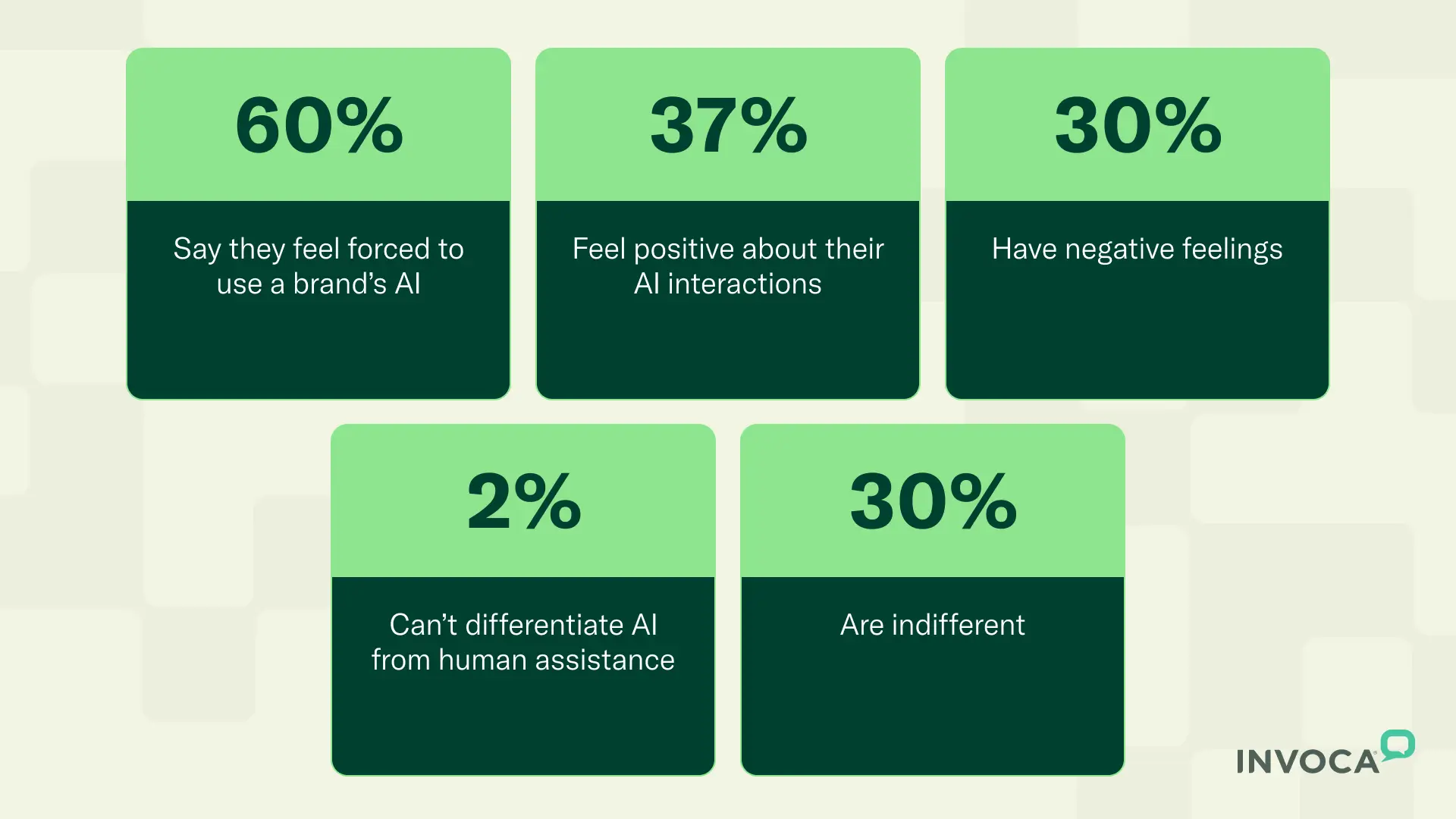
In fact, only 10% of respondents think that brands are using AI to personalize their experiences. Over a third think that companies use AI to save money, and another quarter think that it’s to avoid hiring more human staff. The perception is that AI assistants aren’t there to help the consumer, but to help the brand make more money. Even though, in the end, that is the case, there’s no reason why it should be at the sacrifice of great customer experiences.
Impersonal AI is Turning Off Consumers
The way many brands are using AI assistants and virtual agents today is frustrating consumers. Nearly half of surveyed consumers say that interacting with a brand’s AI makes them feel less valued as a customer. At the same time, 30% said that interacting with a brand’s AI didn’t impact their buying experience at all. Across all the survey results, indifference to AI was very strong—often more so than negative or positive feelings—so there’s lots of room for improvement here.
Foisting AI on consumers isn’t something that they’ll just deal with because it’s the status quo, either. After just one bad experience, 66% of consumers say they will never do business with a brand again. And don’t think you can fool them; only 2% of consumers claim they can’t tell the difference between an AI assistant and a human, whether that’s over text message, online chat, or the phone.
Despite the Trepidation and Indifference, Many Consumers Are Happy with AI Assistance
The obvious takeaway from the survey data is that AI assistance needs to improve significantly to provide the level of service and personalization that consumers expect. However, there are some significant signals that consumers are totally open to getting help from AI, often satisfied with it, and even optimistic about its future. Really, they just want it to work better.

In fact, over 70% of consumers are satisfied with the help they get from AI at least some of the time. Of course, a shift to being satisfied with AI all of the time would be better, but we’re looking at the potential here.
In that vein, younger consumers are also much more receptive and generally satisfied with AI. Digital-native Gen Zers will soon make up the majority of adult consumers, but their expectations are only going to get more sophisticated, so innovation on the AI front has to be continuous. Things get thorny when you look at how much Boomers dislike AI, though, so being conscious of your demographics is key when integrating AI into your buyer journey.
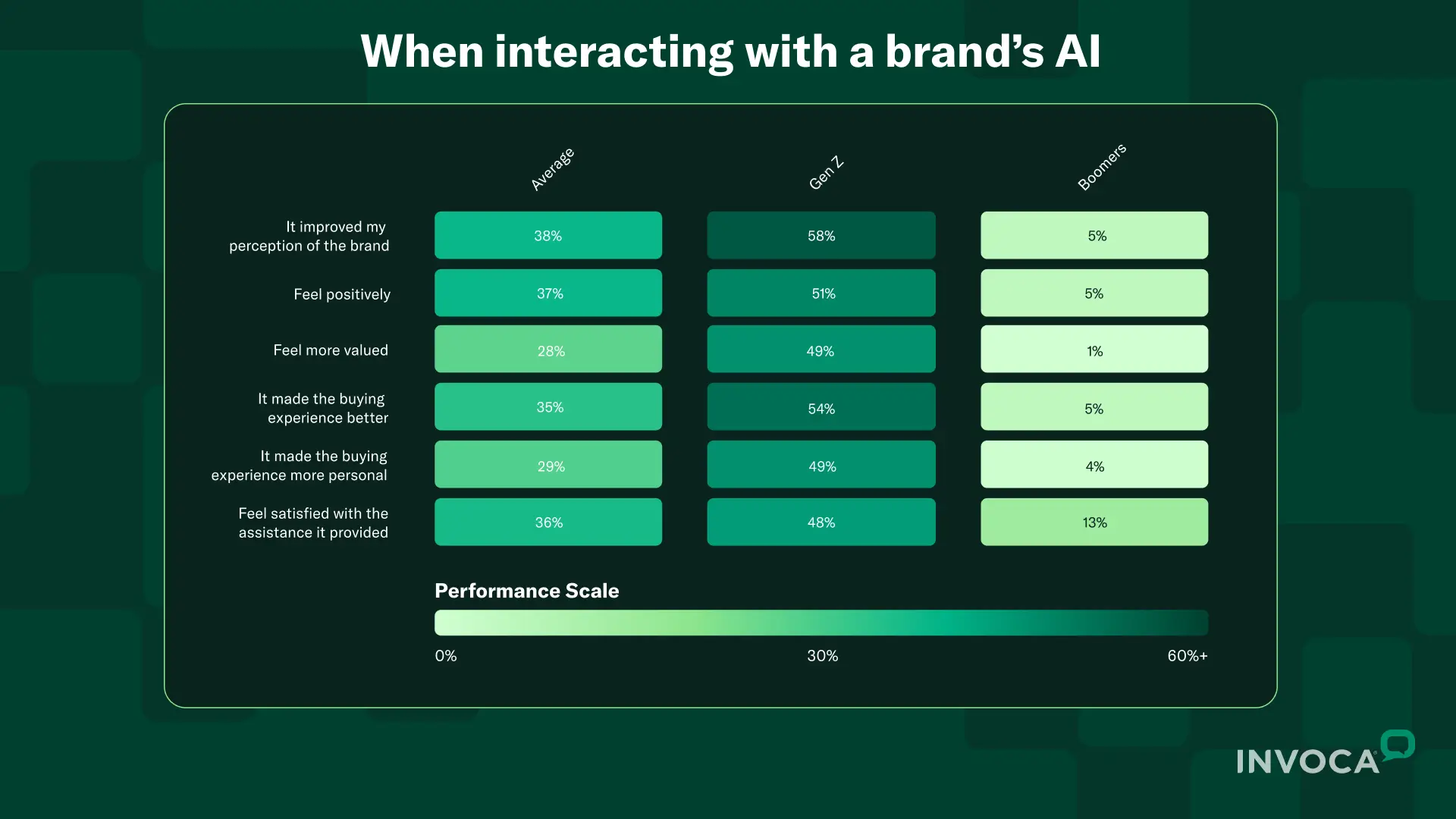
How AI Can Be Used More Effectively to Improve the Buying Experience
Consumer expectations of what AI should be able to do are high, but so is the level of optimism that it’ll get better very soon.
Nearly 60% of consumers believe that AI assistance used by brands will improve significantly in the next few years, and many think it will even replace human customer service in the near future. About a third of them won’t be happy if that happens, however. Despite all of the advances in digital communications technology and AI, 84% of consumers think that having a human connection during a high-stakes purchase is important—and none said it’s not important. This is another strong signal that easy access to live help will remain critical to keeping your customers happy and providing personalized experiences for a long time coming.
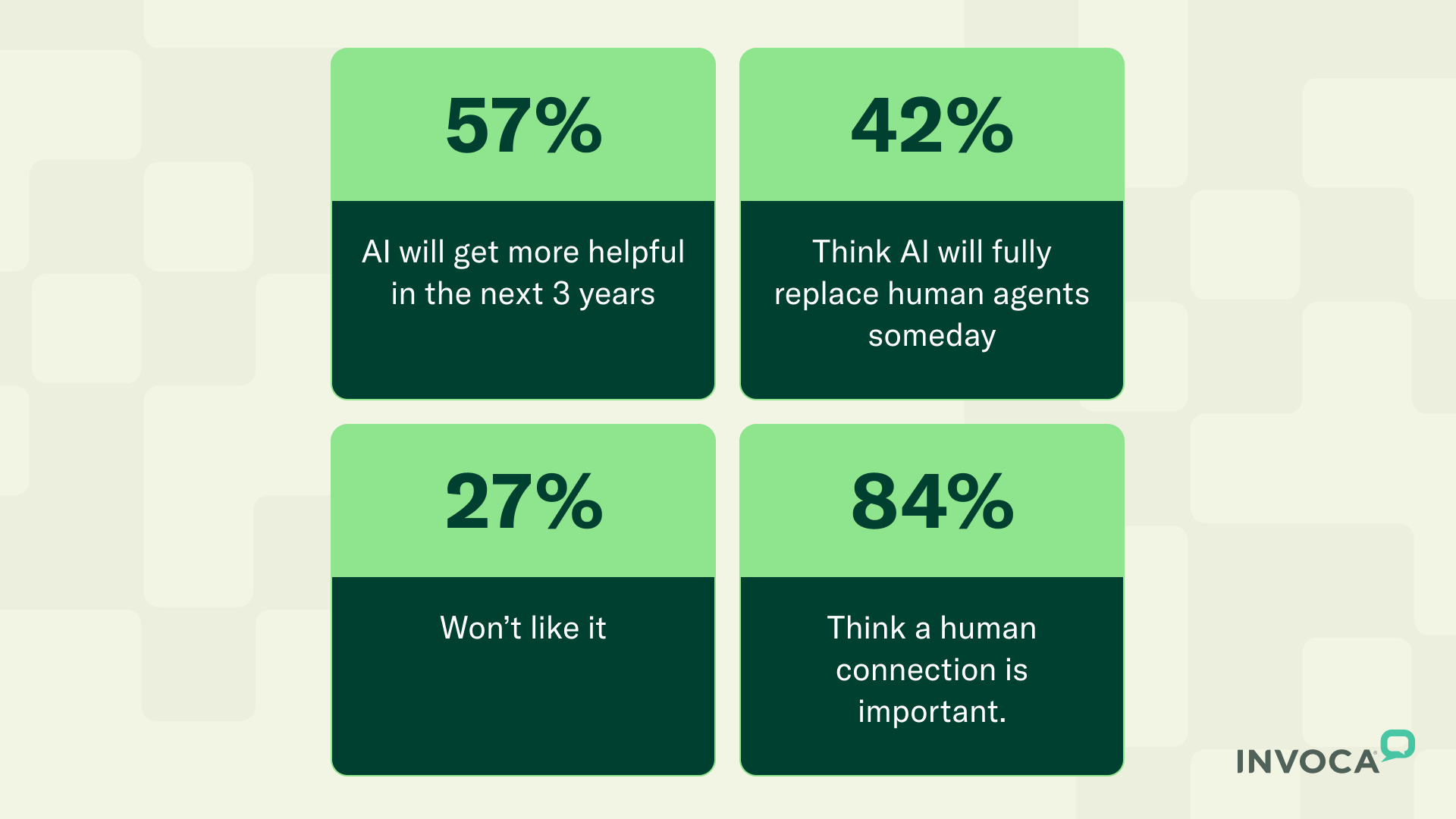
But what actually needs to improve to make AI work for today’s consumer? Most want it to enable them to get quicker access to a human. While that initially sounds a bit like “we don’t actually want to use AI,” only 8% said that they don’t want to interact with AI at all when making a high-stakes purchase. What it really means is that they want easy access to human help when they need it.
It may seem counterintuitive at first, but AI can actually be used to make access to humans easier when it’s needed. Making AI assistance available during the buying journey helps consumers get simple questions answered quickly without human assistance, reducing the burden on contact centers and business locations and freeing them up to work with high-value customers with more complex inquiries. AI agents can also be trained to route customers to a live agent at just the right time. Instead of being a barrier to human assistance, AI should be used as a facilitator. If information from AI and other digital interactions is also passed on to the agent who answers the phone, the consumer can get an incredibly fast and personalized experience that wouldn’t otherwise be possible.
Consumers also want AI to be smarter, provide more personalized responses, and overall, just feel more human. If they have to use AI, they want it to feel less like, well, AI.

When do Consumers Actually Want to Use AI?
Now, there are plenty of situations where consumers prefer to use AI rather than call and talk to a person. In fact, almost three-quarters of survey respondents said they prefer AI when it’s faster than a human. But it’s important to consider that the data indicates consumers mostly want AI when the task is simple and they need fast answers.
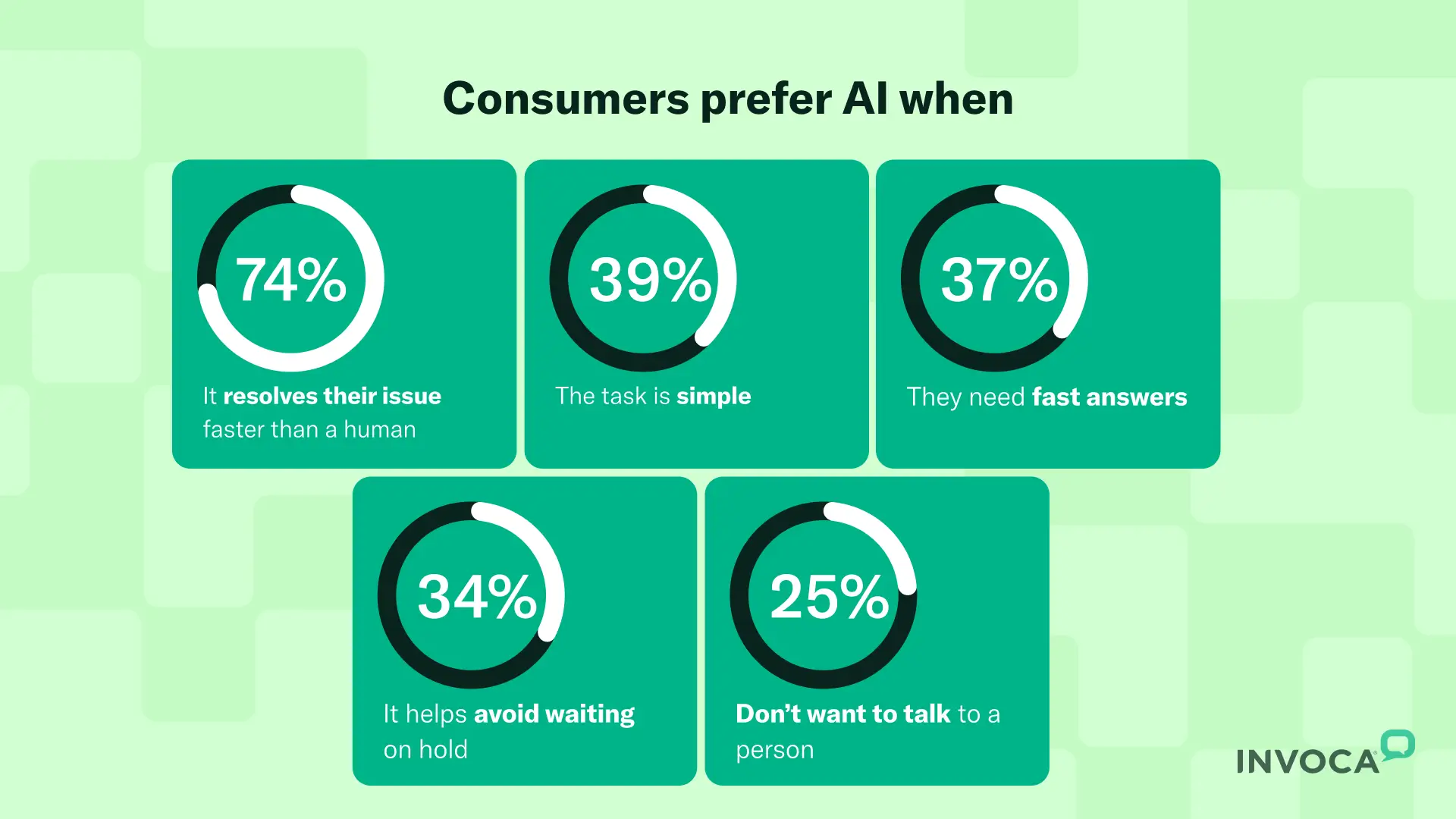
On the flipside, consumers think that AI is worst at solving complex issues, providing empathy, and understanding context or nuance. When you’re dealing with complex purchases like big home renovations, healthcare decisions, or refinancing a mortgage, there is a lot of context and nuance to contend with. People are not ready to trust AI to guide them in these kinds of situations.
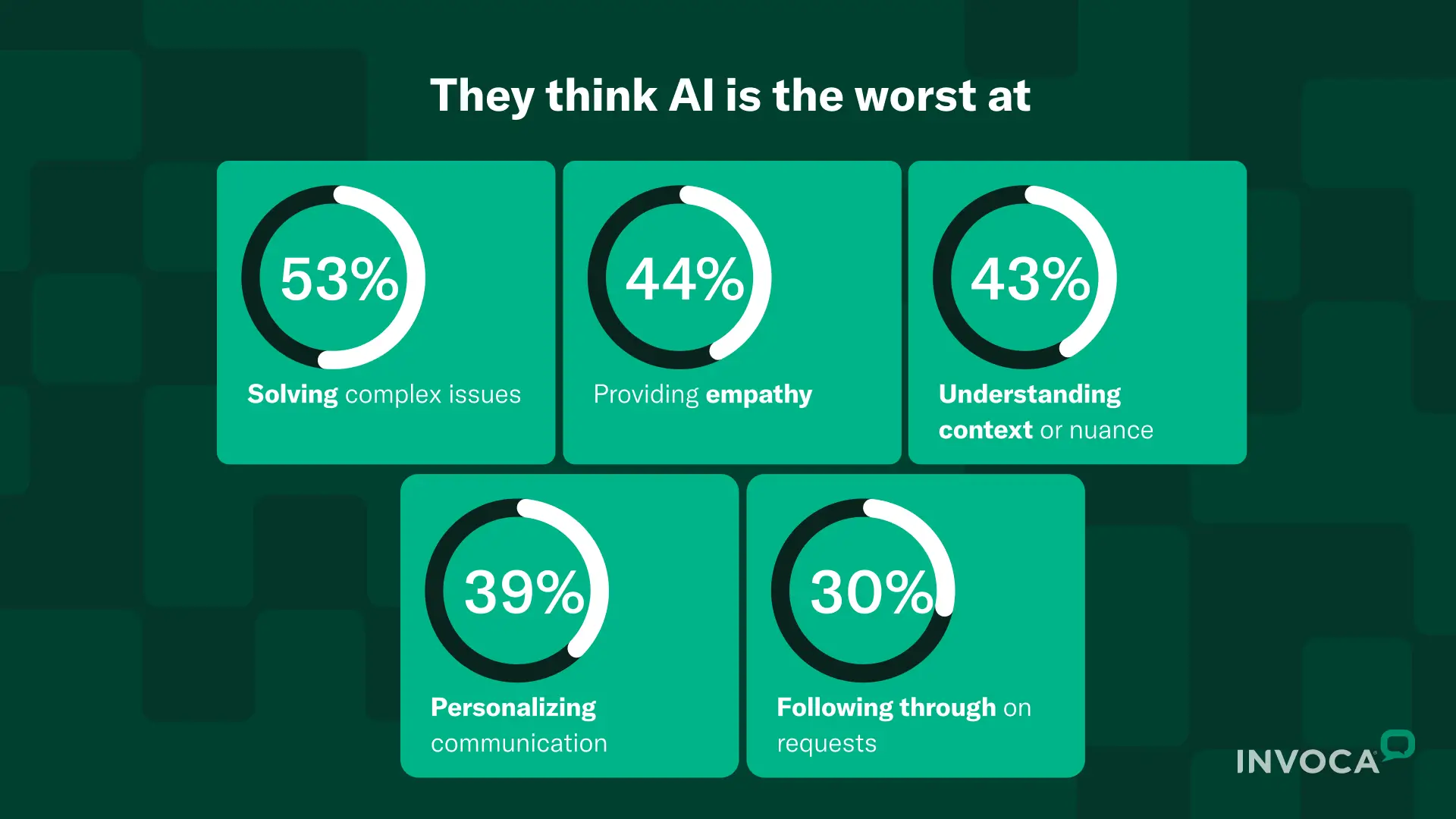
They also—big surprise—think that AI is bad at personalizing communication. When consumers are trying to get help with a complex purchase, they don’t want canned responses; they want an expert to hold their hand, walk them through the process, and make them feel confident that they are making the right decision with their hard-earned money.
Using AI to Create More Personalized and Seamless Buying Experiences
The future of AI in the buying journey isn’t about replacing humans—it’s about making every human interaction smarter, faster, and more personal. The brands that will win aren’t the ones forcing AI at every turn, but the ones using it so seamlessly that consumers hardly notice it’s there. That means using AI in the background to connect the dots between digital clicks, virtual agent interactions, and phone conversations, giving every agent and associate the full context they need to meet customers where they are, on the channel they prefer.
For example, AI can analyze online browsing and search behavior, surface likely needs, and combine that with insights from past phone calls to anticipate questions before the customer even asks them. It can detect intent signals that trigger real-time routing to the right human expert—without forcing the customer through a scripted chatbot maze. It can ensure that when a conversation moves from online to offline, nothing gets lost in translation, so every interaction feels like a continuation, not a restart.
By making AI the invisible conductor behind the scenes—streamlining handoffs, personalizing responses, and enabling truly omnichannel continuity—brands can deliver the speed and convenience consumers love, without sacrificing the empathy, expertise, and trust that only humans can provide. Done right, AI isn’t just a tool for efficiency—it’s the connective tissue of a buying experience that feels effortless, human, and entirely about the customer.
Download the new B2C Buyer Experience Report here to learn more.


